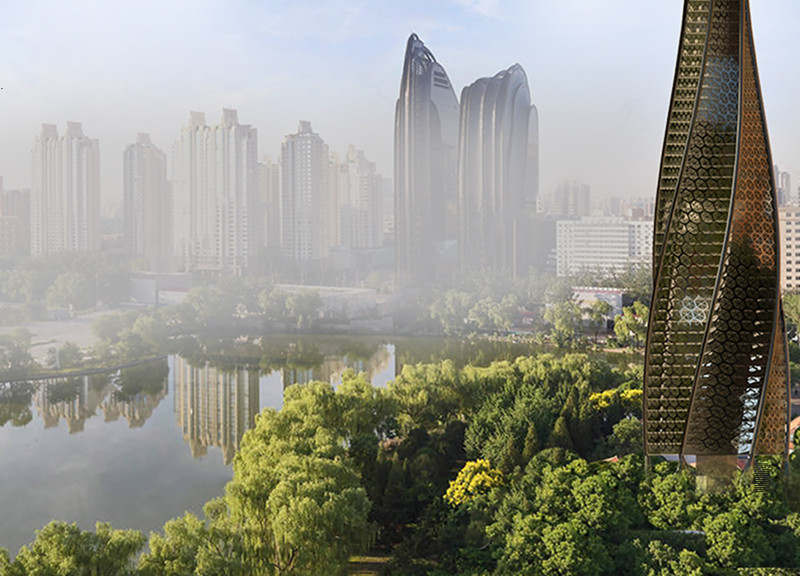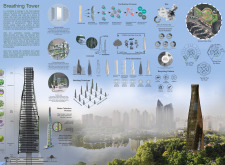5 key facts about this project
The Breathing Tower is an innovative structure designed to combat air pollution in urban areas, particularly in cities like Beijing, known for their significant air quality issues. Positioned within a densely populated setting, the tower integrates sustainability with architecture to create an environment that not only purifies the air but also enhances the urban landscape. The core idea is to replicate natural processes, utilizing solar energy and advanced techniques to support a healthier living space for city residents.
Architectural Concept
The Breathing Tower's design focuses on environmental responsibility at its core. Its façade functions as an active air filter, capturing pollutants before they enter the building. The outer coating of titanium dioxide enables a process called photocatalysis, which breaks down harmful substances into benign by-products such as carbon dioxide and water. This method supports the overall goal of improving air quality while demonstrating a commitment to ecological practices.
Interior and Vegetation Design
Inside the Breathing Tower, void spaces facilitate airflow and create a breathable atmosphere for occupants. The design incorporates dense vegetation to both enhance aesthetics and improve functionality. This greenery helps regulate oxygen levels, contributing to a healthier internal climate. The combination of natural elements within the architecture not only improves air quality but also creates a visually calming environment for those inside.
Water Collection System
The water collection system is another essential aspect of the Breathing Tower's sustainable approach. Filtered water from various internal processes is collected and reused, minimizing waste and maximizing resource efficiency. This recycling of grey water aligns with the tower’s goal of sustainability, ensuring that the building functions with a lower environmental impact through thoughtful design choices.
Aerodynamic Efficiency
The structure’s form is designed with aerodynamic efficiency in mind. Its circular shape allows for a 300-degree intake of air, enabling the tower to process up to 3 million cubic meters of air daily. This capacity illustrates the building’s role in addressing urban air pollution effectively. The architecture not only provides significant volumes of clean air but also emphasizes the interaction between the building and its surrounding environment.
The Breathing Tower exemplifies an approach that combines advanced technology with natural integration, creating a space that supports the health of both people and the planet.



















































